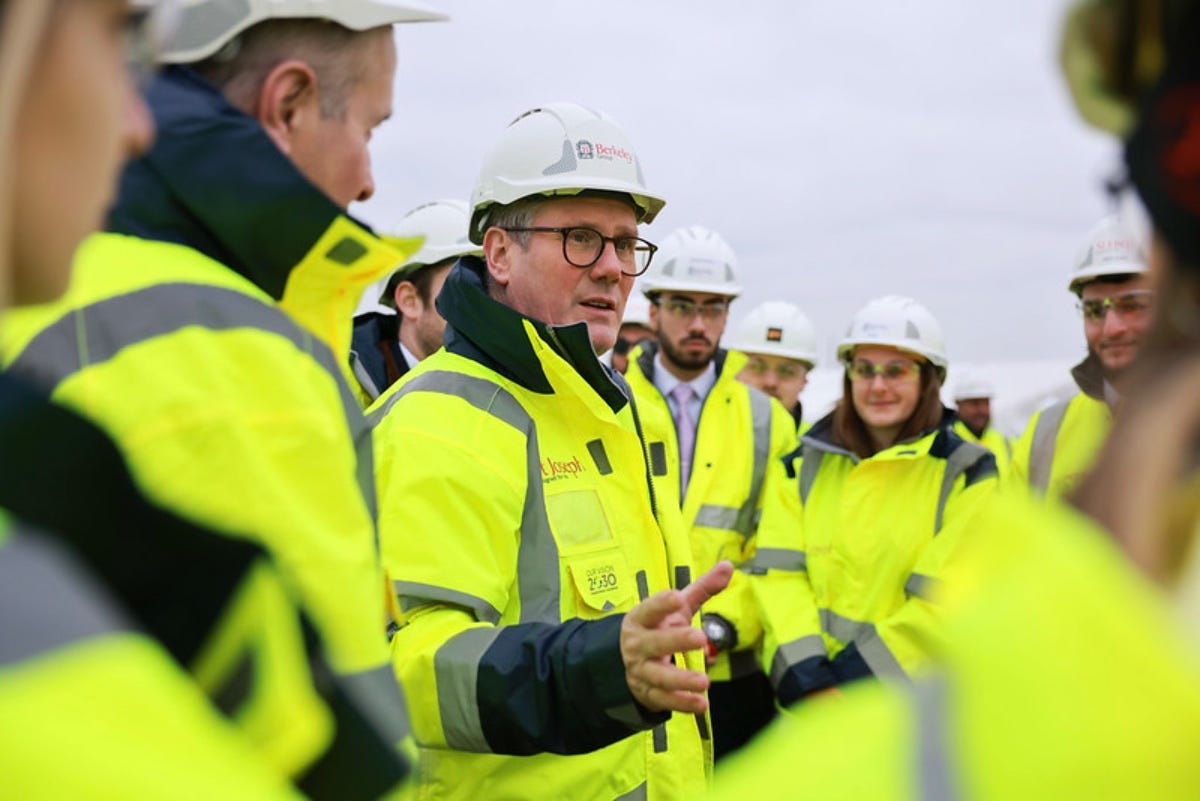Britain’s house-building target looks increasingly like a fantasy
The prospect of 1,500,000 new homes by the end of this parliament seems even more unrealistic than it did when first unveiled last year.
Almost everyone agrees that we need more houses in the UK. The government is putting the bite on local authorities, the ambition to own your own home is as fierce as ever, and it would be helpful if the escalator of rising prices was stopped, or even reversed. What could possibly go wrong?
Unfortunately, just about everything. Despite Labour’s exhortations, the industry is not responding. The number of planning applications last year fell to an 11-year low, figures out this week showed. Applications must rise by a half this year, and each subsequent year, to meet the 370,000 government target. Since not every successful application leads to construction, the consequent target of 1,500,000 new homes by the end of this parliament looks like even more of a fantasy than it did when unveiled last year.
Already the parties are getting their excuses lined up. The housebuilders argue that they are commercial businesses, not an arm of the government, and that they will only build what they think they can profitably sell. Like any other producer, they see little point in sacrificing margin for volume. Last year, the seven builders which dominate the industry cut their combined output by a fifth.
This year, they face increasing costs of labour, materials and compliance, which all point to higher prices, and thus fewer buyers. The Building Code is riddled with well-meaning measures, like those limiting the size of higher-floor windows to discourage people from jumping out of them, which raise costs and force uniformity of design. Should mortgage costs start to rise again, any builder’s natural response is to cut back production.
Local authorities, which once contributed a third of new-builds, are more likely to be desperately trying to avoid bankruptcy than to re-enter the market. Meanwhile, local home-owners can harness the law in all its magnificent complexity to prevent, or indefinitely delay, developments going ahead.
As a result, much of what is actually getting built is in unappealing estates, featuring (barely) detached houses with miserable little windows, few facilities, and their occupants effectively entirely dependent on cars for mobility. No executive from the big building companies would choose to live in one of these “executive homes”.
Were we building the attractive neighbourhoods of the future, places where people would really want to live, not building enough of them would be less of a crime against society. Unfortunately, many of the places which are sought-after today would not be compliant with the current regulations. In short, it is hardly surprising that there are so few planning applications. So:
Between the Nimby and the homeless falls the box on the housing estate.




